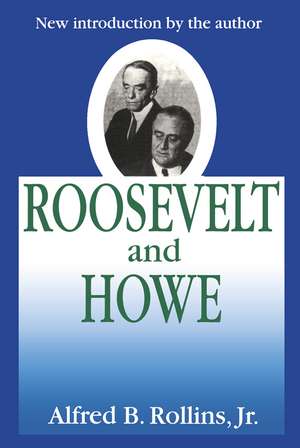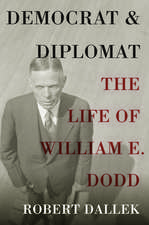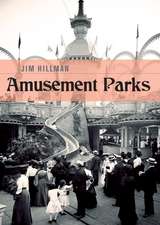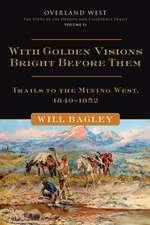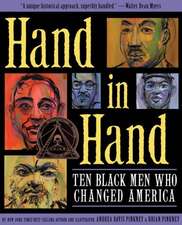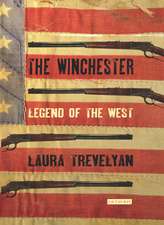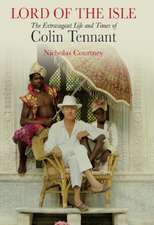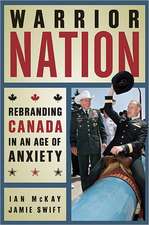Roosevelt and Howe
Editat de Jr Rollinsen Limba Engleză Hardback – 29 mar 2018
Howe went to the White House with the Roosevelts. He was Secretary to the President but was soon eclipsed by the enormous scope of Roosevelt's affairs and his own quickening illness. He died in 1936, just short of Roosevelt's crucial first campaign for reelection. He could not have imagined how well his protogy would do without him, yet FDR always suffered from the lack of a close, reliable intimate who could say "No" to him. This role was not filled until Harry Hopkins came to share his circle of power.
| Toate formatele și edițiile | Preț | Express |
|---|---|---|
| Paperback (1) | 425.86 lei 43-57 zile | |
| Taylor & Francis – 30 sep 2001 | 425.86 lei 43-57 zile | |
| Hardback (1) | 1000.27 lei 43-57 zile | |
| Taylor & Francis – 29 mar 2018 | 1000.27 lei 43-57 zile |
Preț: 1000.27 lei
Preț vechi: 1219.84 lei
-18% Nou
Puncte Express: 1500
Preț estimativ în valută:
191.40€ • 200.37$ • 158.37£
191.40€ • 200.37$ • 158.37£
Carte tipărită la comandă
Livrare economică 07-21 aprilie
Preluare comenzi: 021 569.72.76
Specificații
ISBN-13: 9781138532106
ISBN-10: 113853210X
Pagini: 530
Dimensiuni: 152 x 229 x 29 mm
Greutate: 0.45 kg
Ediția:1
Editura: Taylor & Francis
Colecția Routledge
Locul publicării:Oxford, United Kingdom
ISBN-10: 113853210X
Pagini: 530
Dimensiuni: 152 x 229 x 29 mm
Greutate: 0.45 kg
Ediția:1
Editura: Taylor & Francis
Colecția Routledge
Locul publicării:Oxford, United Kingdom
Cuprins
I: The Winds of Fate; 1: The Champion and the Ghost; 2: Stereotype of a Crusader; 3: A Young Progressive Finds a Program; 4: Vote of Confidence—1912; 5: The Making of a “Mediaeval Gnome”; 6: The Harried Years; II: A Team in The Making; 7: Fighting Tammany with Its Own Weapons; 8: Collapse of the Progressive Dream; 9: In the Navy; 10: Business Politicians for the Navy; III: The Time of Testing; 11: The Hopeless Crusade—1920; 12: Life in Suspense; 13: Rebuilding; 14: Fight for a New Democratic Party; IV: Apprenticeship for The White House; 15: Drafted for Governor; 16: The Governor and His Team; 17: Baptism under Fire; 18: Victory in New York; 19: Relief and Reform; V: For The Victors: “Triumph and Tragedy”; 20: Planning the “Draft”; 21: The Road to Chicago; 22: “Happy Days Are Here Again!”; 23: Triumph of a Lifetime; 24: Preparing for the Challenge; 25: Trouble Shooter in the White House; 26: The Call of the Crusades; 27: Spokesman and Strategist; 28: And Quietly Sleep; 29: The Greatness of a Little Man; Bibliographical Essay; A Note About the Author
Descriere
In his first book of non-fiction, originally published in 1962, Herbert Gold explores some not-so-happy problems confronting people in an age of "mass destruction, mass inertia, mass everything." While acknowledging that we live in a time of utmost global significance-war on an enormous scale was a reality of the twentieth century and continues to threaten, unadulterated evil has exhibited itself in grandiose proportions-Gold tackles issues and problems which are very much of significance to the individual: teaching, writing, love, marriage, divorce, and death. In The Age of Happy Problems, Gold takes the reader through a journey of eclectic characters, situations, and locales. Part I is a selection of essays entitled "American Events." In "The Age of Happy Problems" we are presented with an analysis of the problems facing people in the middle of their lives and careers. "How to Be an Artist's Wife" explores the prospect of being married, and remaining married, to a temperamental and egotistical artist. "Divorce as a Moral Act" describes the termination of marriage as a means for renewal and the chance to start over again the search for love. "The Bachelor's Dilemma" evokes the decisions confronting the male of the "big city." And "A Dog in Brooklyn, A Girl in Detroit: A L"ife Among the Humanities" is a memoir on the paradoxes of teaching in a university. Part II is entitled "American Places." The author examines in this section various American lifestyles. In "Paris: Notes from La Vie de Boheme," Gold describes Americans abroad, why they decide to become expatriates, and how they adapt to their new surroundings. In "Greenwich Village: The Changing Village" he writes about the importance of New York City's symbol of change, experiment and nonconformity. Finally, the author meditates on "Death in Miami Beach," offering a moving account of the relationship between death and the popular Florida city. Gold writes: "How can I total it up? What is the map of t
